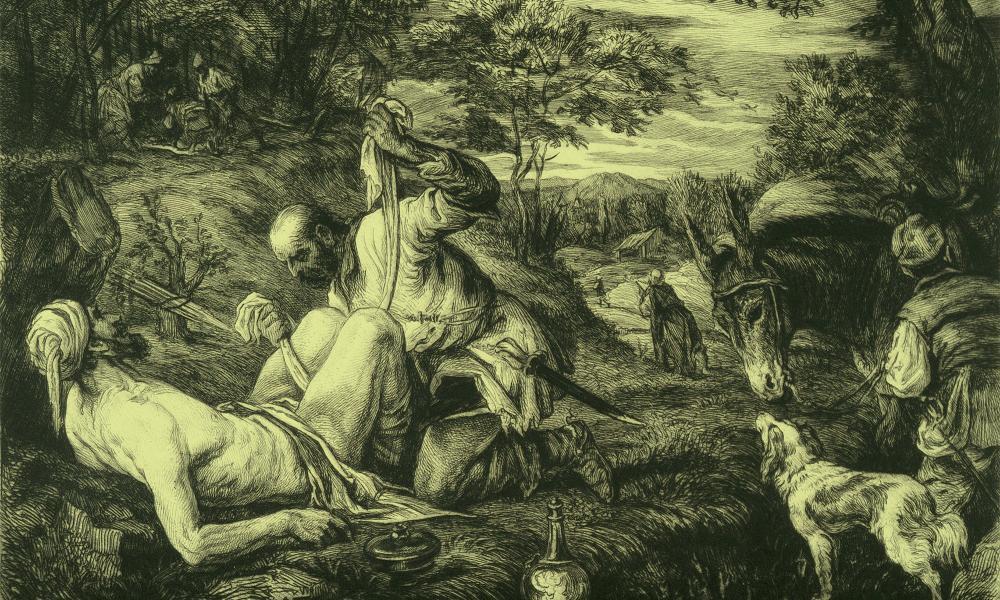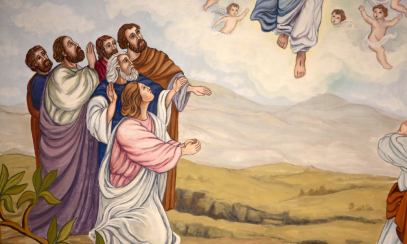
The Good Samaritan: A Lesson in Mercy
The Parable in Brief
In order to understand the full context of the parable, we must first consider the Gospel passage directly preceding it – Luke 10:25-28. In these verses, a scholar of the law had asked Jesus what he needed to do to inherit eternal life. In the end, the scholar provided his own answer by citing the two great commandments: to love God and to love your neighbor as yourself.
When Jesus confirmed his answer, the scholar asked a follow-up question, “And who is my neighbor?” Jesus offered this parable as his response.
Jesus told the story of a man who was robbed, beaten, stripped and left for dead on the side of a road. A priest and a Levite each, in turn, saw the man and responded to him by moving to the opposite side of the road and continuing on their respective travels. Then, a Samaritan happened upon the man and had a very different response. He was “moved with compassion.” This led him to dress the man’s wounds, put him on his animal, take him to an inn and care for him. The next day, he even gave some money to the innkeeper (with the promise of more on his return trip), and charged him with the care of the man.
After this, Jesus asked the scholar which of the three travelers in the story “was neighbor to the robber’s victim?” The scholar answered that it was the “one who treated him with mercy.” Jesus then instructed the scholar: “Go and do likewise.”
Learning the ‘Who’s who’ of Mercy
What a powerful turn of events for the scholar! He began by asking, “And who is my neighbor?” This was such a reasonable question. After all, if inheriting eternal life rested on his successfully loving his neighbor, he had best find out who this neighbor was. This neighbor needed to be identified so that he or she might be loved. In other words, this neighbor needed to be made known.
And yet, by the end of the parable, Jesus is asking who in the story “was neighbor to the robber’s victim?” In other words, Jesus reveals that the scholar is asking the wrong question. We are not to be busying ourselves with evaluating who qualifies as our neighbor – who is worthy or deserving of our love. Rather, Jesus makes it clear that eternal life is not “out there” dependent on a successful search to identify our neighbor. Eternal life is to be encountered in the conversion of our hearts. That is, we are the tree that will be judged by its fruits, so we are to be the neighbor to all those we encounter. It is each one of us who will be made known to others by our love. And so we must ask ourselves, are we “moved with compassion,” and do we act with mercy when we see the wounded, the ignored and the excluded?
Ultimately, it is mercy that makes the neighbor in the parable recognizable. It is mercy, or being moved with compassion, that reveals the neighbor. That the neighbor is known through his or her mercy is an indication that to be “neighbor” is to be in communion with God, who is merciful and in whom there is eternal life alone. It is this communion that allows the neighbor to fulfill the second of the great commandments, i.e., we can only love our neighbor by being neighbor.
A Bonus Lesson: Becoming Merciful
Father Howard Gray, SJ, of Georgetown University asserts that the parable of the good samaritan actually provides us with a process for becoming merciful. In a lecture to seminarians several years ago, he explained that the parable teaches us that the first lesson of compassion is to look beyond ourselves toward others. This involves developing a contemplative way of seeing. This type of seeing leads to a “suffering with” the other, which is the very meaning of compassion. However, this “seeing” also elicits a response “from the gut” that moves us to action on behalf of the other in a way that naturally seeks to involve others. In fact, Father Howard argues that all acts of compassion have in them the grace to build “networks of compassion.”
The Samaritan illustrates this process, Father Howard says, by doing four things: 1) he sees the victim, 2) draws close to him, 3) allows his heart to be moved with compassion, and 4) acts. In other words, he was moved beyond the act of seeing and feeling for the victim to actually give up time, money and priorities in order to care for him. In addition, he begins to build a network of compassion by involving the innkeeper and adding a promise to follow-up on his return trip.
Theology 101 Quiz
Test your knowledge of what the Bible has to say about mercy …
“But God, who is rich in mercy, because of the _______ he had for us, even when we were dead in our transgressions, brought us to life with Christ (by grace you have been saved).”
A. deep pity
B. tremendous despair
C. great love
D. wondrous hope
Answer: (C) – great love (Eph. 2:4-5)
Spiritual Reading
St. Alphonsus de Liguori (1696-1787) was the founder of the Congregation of the Most Holy Redeemer (the Redemptorists) and is a doctor of the Church. He once said that without good books and spiritual reading, it would be morally impossible to save our souls. In this spirit, consider a prayerful reading of The Art of Loving God by St. Francis de Sales during this Year of Mercy.
St. Francis de Sales (1567–1622) was a bishop of Geneva in Switzerland. He was known for his faith and his gentle approach to the religious divisions that arose in Switzerland after the Protestant Reformation. In The Art of Loving God, St. Francis explains how each one of us can practice the art of loving God through the simple things in life. Along the way, he teaches the reader how to develop patience, courage, selflessness and many other virtues of the Christian life.



